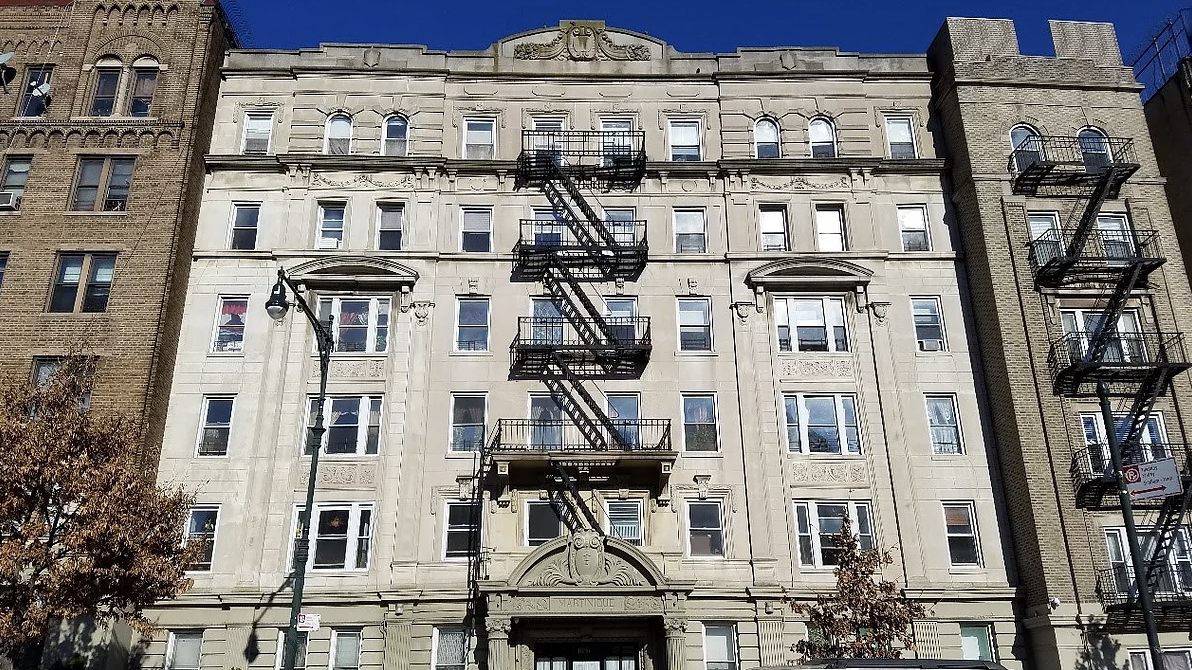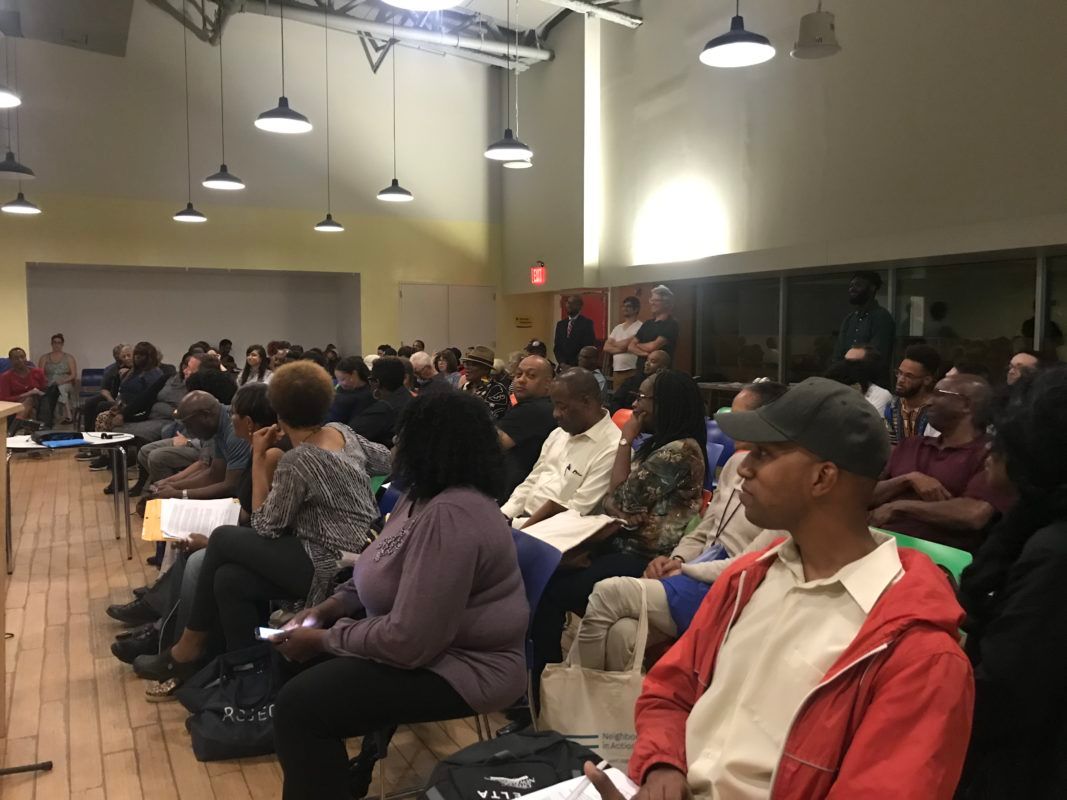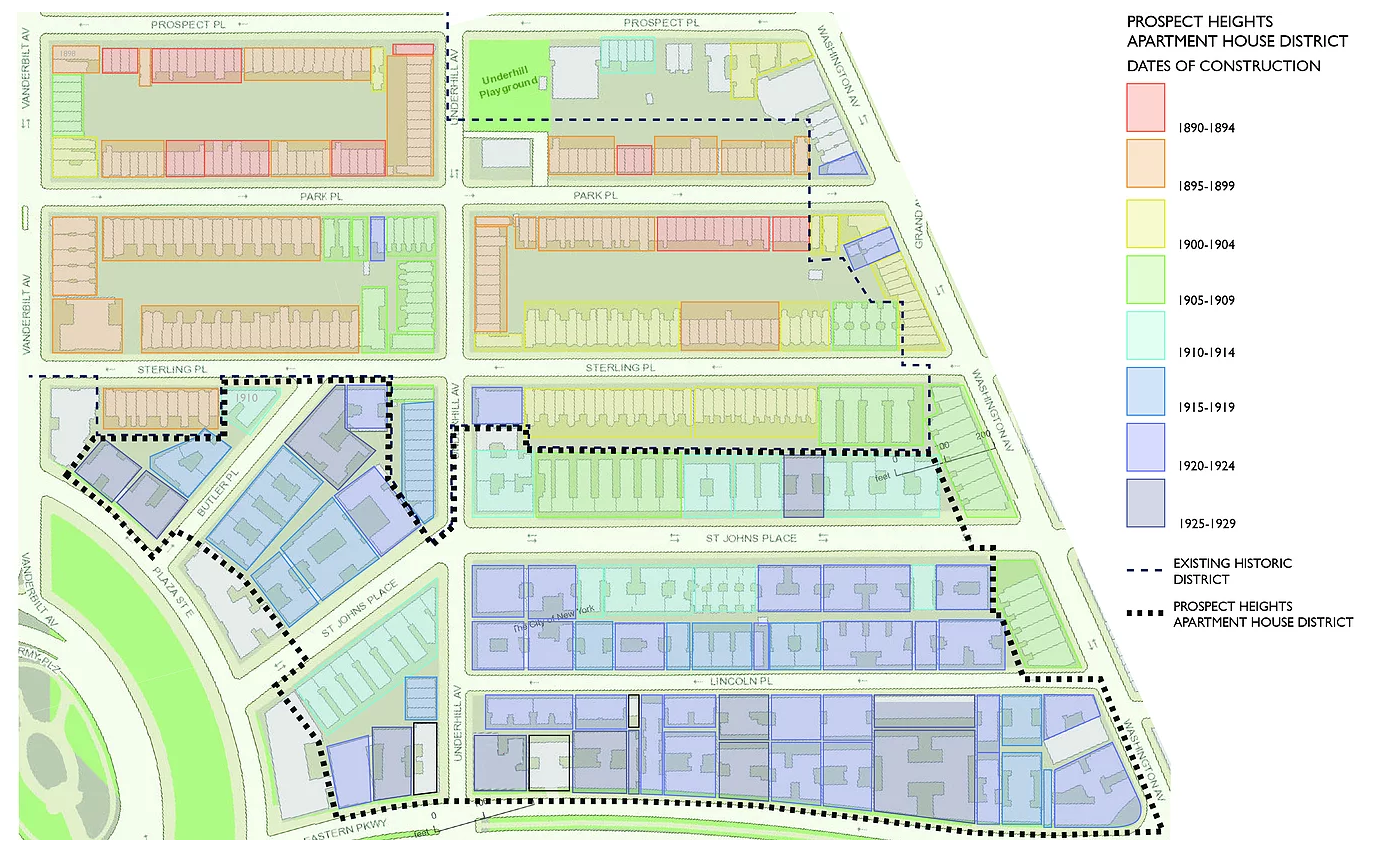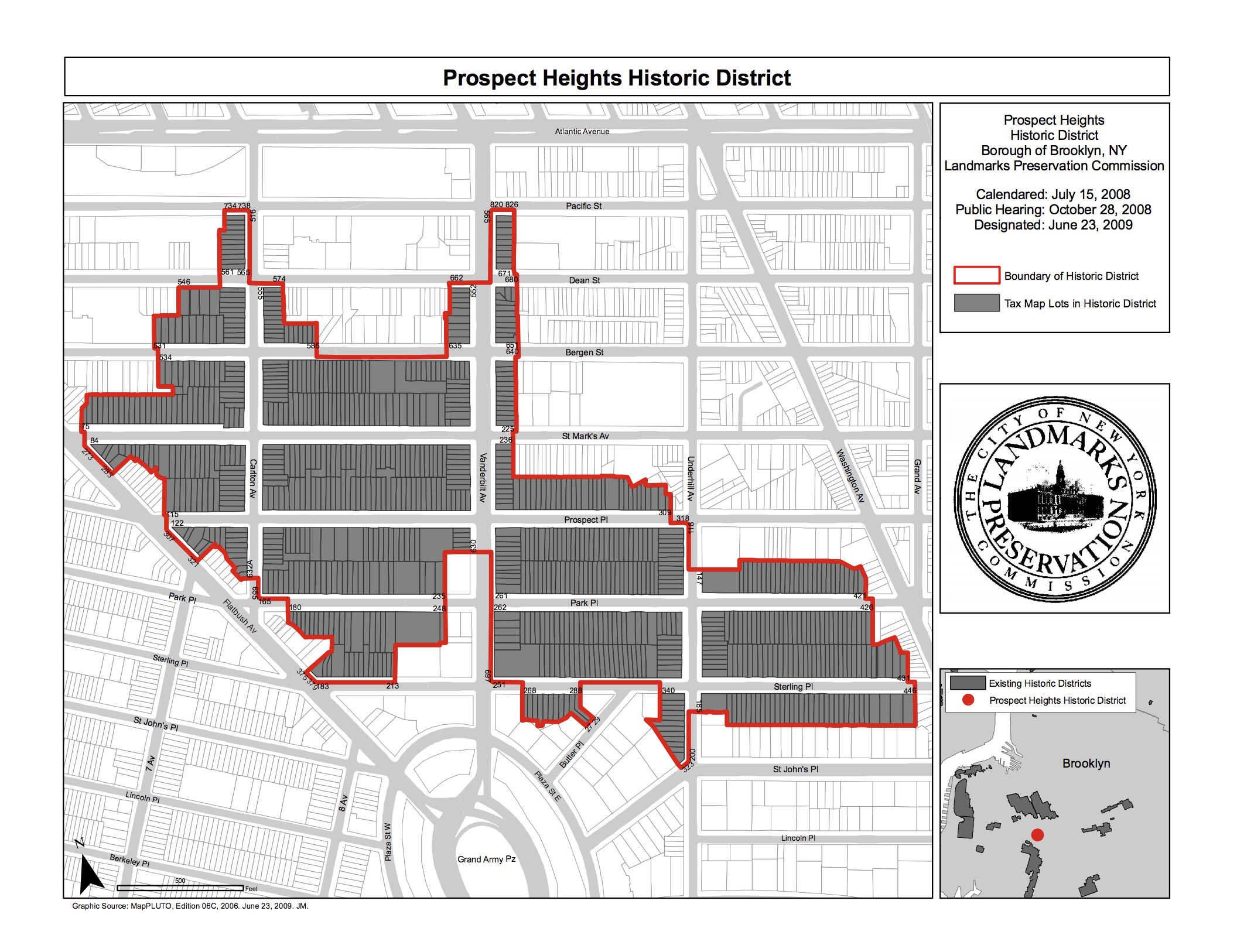Prospect Heights Apartment House District Inches Towards Becoming Landmarked


PROSPECT HEIGHTS — Community Board 8 voted in favor at it’s October 11 general meeting, to pursue a new landmark district designation in Prospect Heights they say will stop developers from using air rights to build on top of existing buildings.
The proposed Prospect Heights Apartment House District encompasses 107 buildings from Eastern Parkway to St. Johns/Sterling Place between Washington Avenue and Plaza East for a total of six blocks.
The need to protect the historic architecture and concerns of overdevelopment — especially as it relates to building vertically — is part of what prompted the pursuit to landmark the area, according to members at Thursday night’s CB8 meeting.
“Given the significant unused development rights in the Prospect Heights Apartment House District, designating the area a New York City landmark is the best way to ensure its buildings will continue to serve as a document of the city’s aspirations for residential living in Brooklyn at the beginning of the 20th Century and be enjoyed by future residents and visitors,” said Gib Veconi, co-chair on the Landmarks Committee of the Prospect Heights Neighborhood Development Council (PHNDC).

PHNDC and The Cultural Row Block Association (CuRBA) launched the campaign to landmark the area under consideration in late 2017 and has already received support from preservationists such as the Historic District Council (HDC). Veconi presented for the first time before the entire community board at the meeting, and so far the campaign has already received more than 600 votes in support through the online petition.
According to the campaign’s website, most of the lots within the district are underbuilt with respect to zoning restrictions. Density can increase up to 50 percent and still meet zoning regulations — making for an attractive spot for developers who choose to purchase the air rights above existing buildings.

Most of the buildings in the proposed historic district were constructed between 1909 and 1929 (see map above). Veconi credits the area as the first densely populated area as new arrivals to Brooklyn sought to live near cultural sites like the Brooklyn Museum, Prospect Park and Brooklyn Botanic Garden and the new underground railway -IRL- that would travel along Eastern Parkway (currently 2/3/4/5).

The district is between two previously landmarked areas and would be adjacent to the Prospect Heights Historic District, which includes 850 buildings was established in 2009 and spans from Flatbush Avenue to parts of Vanderbilt and Underhill, from Sterling Place as far North as Pacific St., at some places.
Later, in 2015, the LPC approved the third phase of the Crown Heights North Historic District, expanding the large swath of landmarked area to more than 1000 buildings. The district spans between Bedford and Kingston Avenues in some places and north and southbound from Pacific Street to Lincoln Place reaching as far south as Eastern Parkway between New York and Nostrand Avenues.
While the Prospect Heights Landmark District was designated within two years, landmarking can take much longer, Veconi acknowledged.




